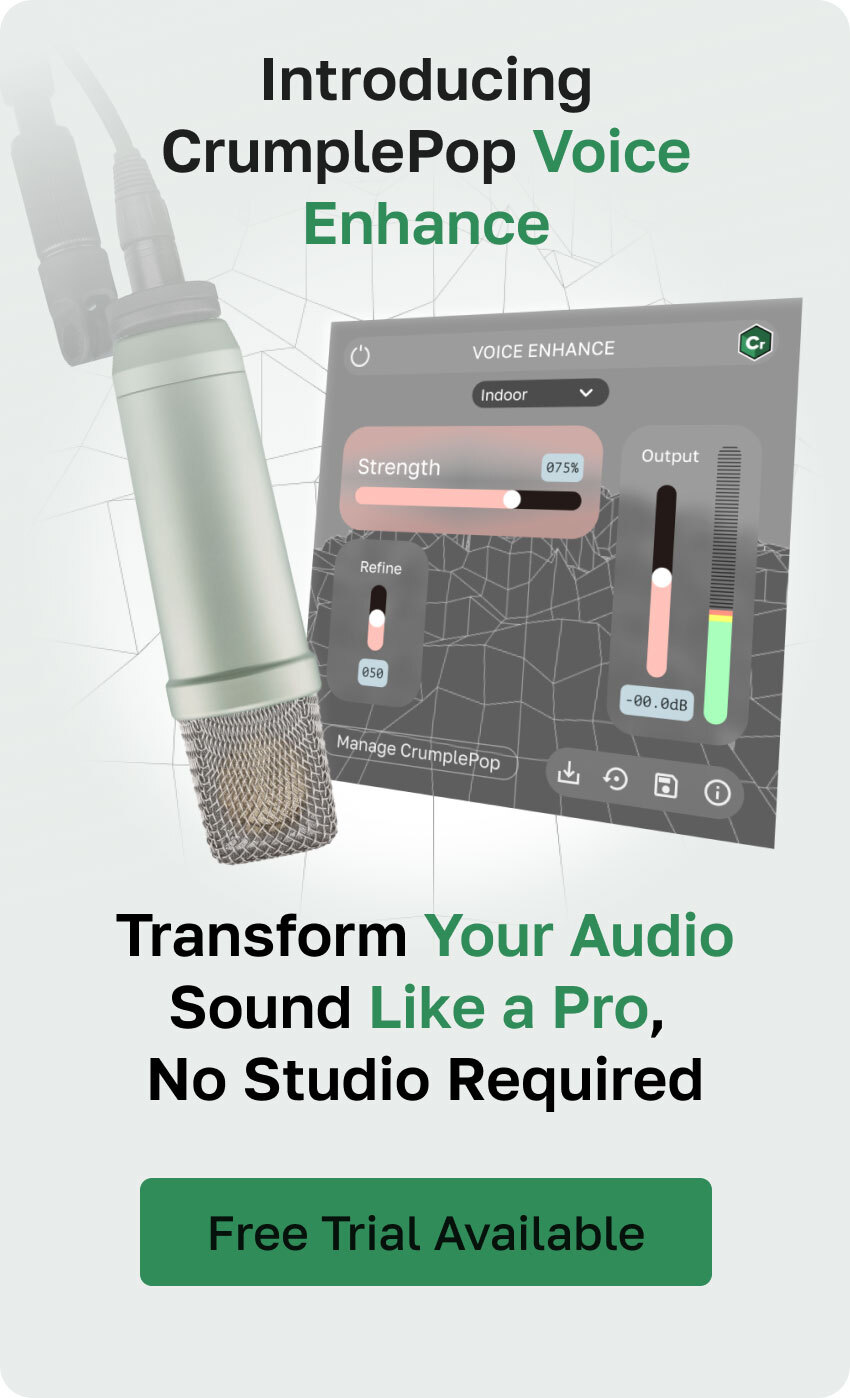When working with an audio recording, there are a lot of things you need to keep in mind, especially if you have a home studio or are recording a podcast in different locations. If you're not careful, your microphones can pick up undesired background noise which is hard to remove during post-production.
Removing echo from your audio recordings might be hard; however, some tools allow you to reduce echo and obtain a better audio quality. Some are in paid software, others are VST plug-ins, but there are also some good free alternatives.
Audacity is one of the most used free audio editors because it's powerful, easy to use, and free. Plus, when you need to remove background noise, there are very few free tools that offer more than one noise reduction option to tackle unwanted sounds.
What I like about Audacity is that often there are many ways to do the same thing, so today, we’ll see how to remove echo in Audacity using Audacity's stock plug-ins.
At the end of this guide, I'll provide you with a few tips to treat your room to avoid picking up background noise in your future recordings.
First Steps
First off, go to the Audacity website and download the software. It's a simple installation, and Audacity is available for Windows, Mac, and Linux.
Once installed, open Audacity and import the audio you want to edit. To import audio files on Audacity:
Go to File and Open.
Choose among all supported formats on the Audio File drop-down menu and search for the audio file. Click Open.
Another option is to simply drag and drop the audio file into Audacity from your explorer in Windows or finder in Mac. You can replay it to make sure you imported the correct audio.
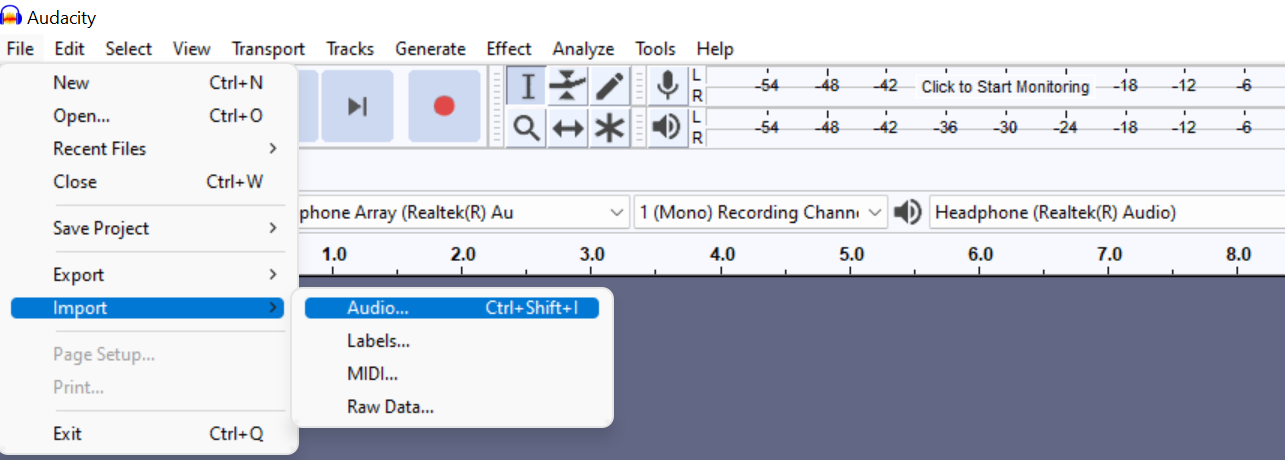

Removing Echo in Audacity Using the Noise Reduction Effect
To remove echo:
Select your track by clicking on Select in your left side menu. Alternatively, use CTRL + A on Windows or CMD+A on Mac.
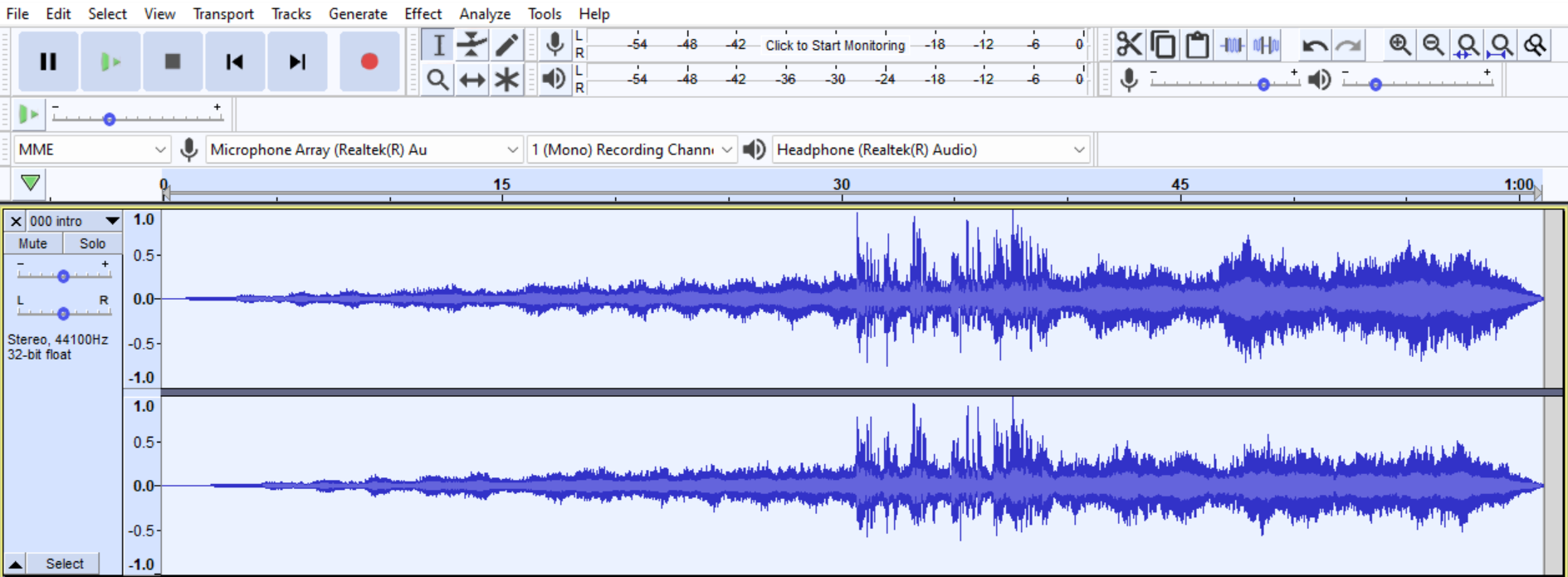
Under the Effect dropdown menu, select Noise Reduction > Get Noise Profile.

After selecting the noise profile, the window will close. The noise profile has now been successfully selected. Go again to your Effects Menu > Noise Reduction, but this time click OK.
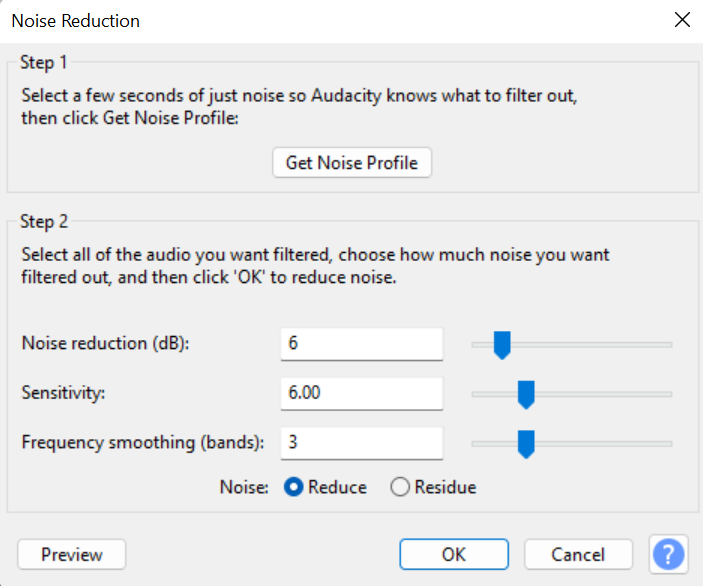
You will see the waveform changes. Replay to hear the result; if you don't like what you hear, you can undo it with CTRL + Z or CMD + Z. Repeat step 3, and play around with the different values:
The noise reduction slider will control how much the background noise will be reduced. The lowest levels will keep your overall volumes to acceptable levels, while higher values will make your sound too quiet.
The sensitivity controls how much noise will be removed. Start at the lowest value and increase as needed. Higher values will affect your input signal, removing more audio frequencies.
The default setting for Frequency Smoothing is 3; for spoken word, it is recommended to keep it between 1 and 6.
Once you like the result, you'll notice the audio volume output is lower. Go to Effects > Amplify to bring the volume up again. Adjust the values until you find the ones you like.
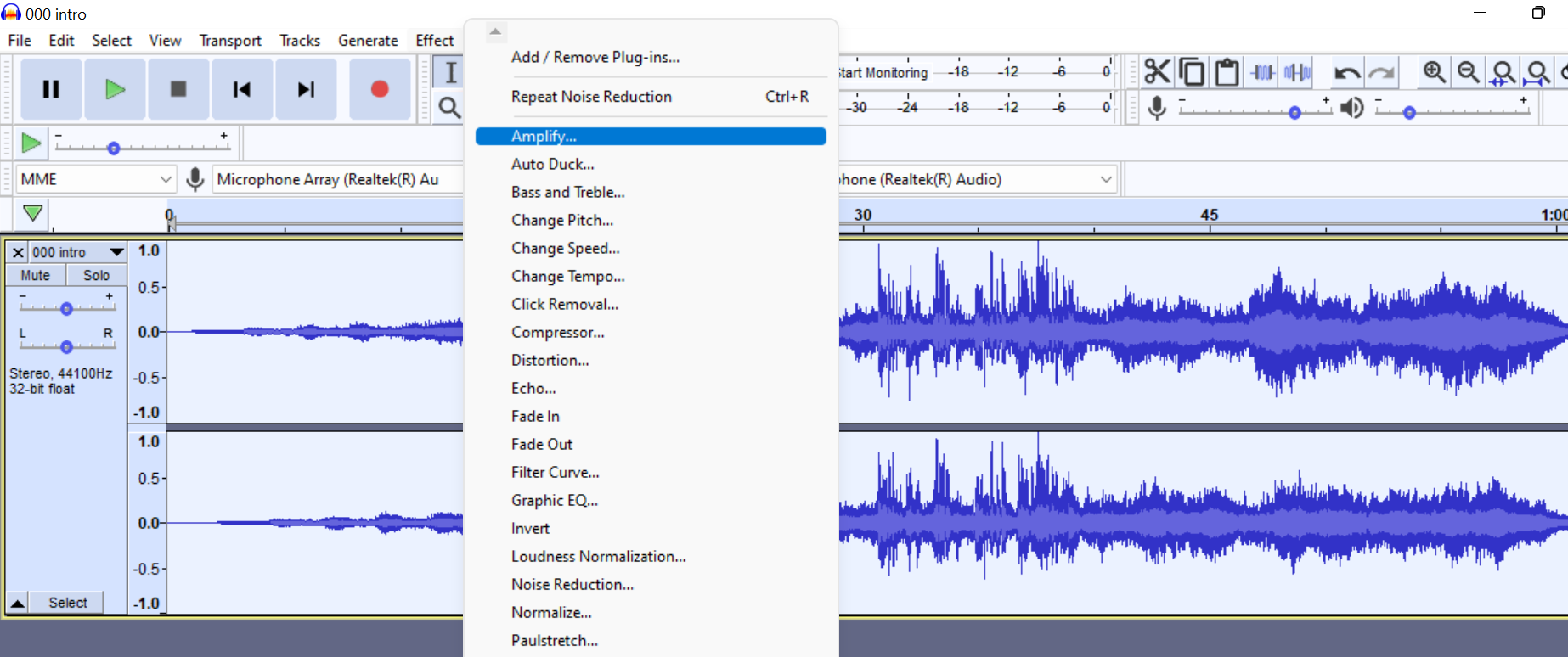
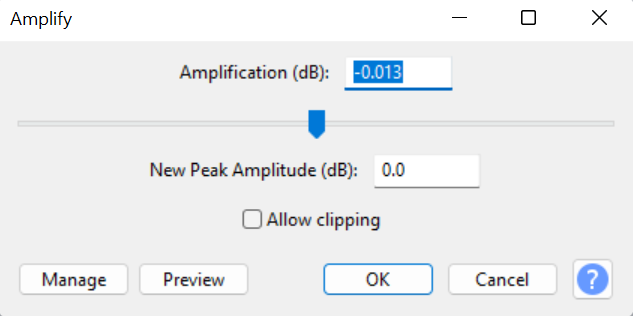
Removing Echo in Audacity with Noise Gate
If the Noise Reduction method doesn’t work for you, the Noise Gate option might help you remove echo. It will allow you to make more subtle adjustments compared to noise reduction.
Select your track, go to your effects menu, and look for the Noise Gate plug-in (you may have to scroll down a bit).
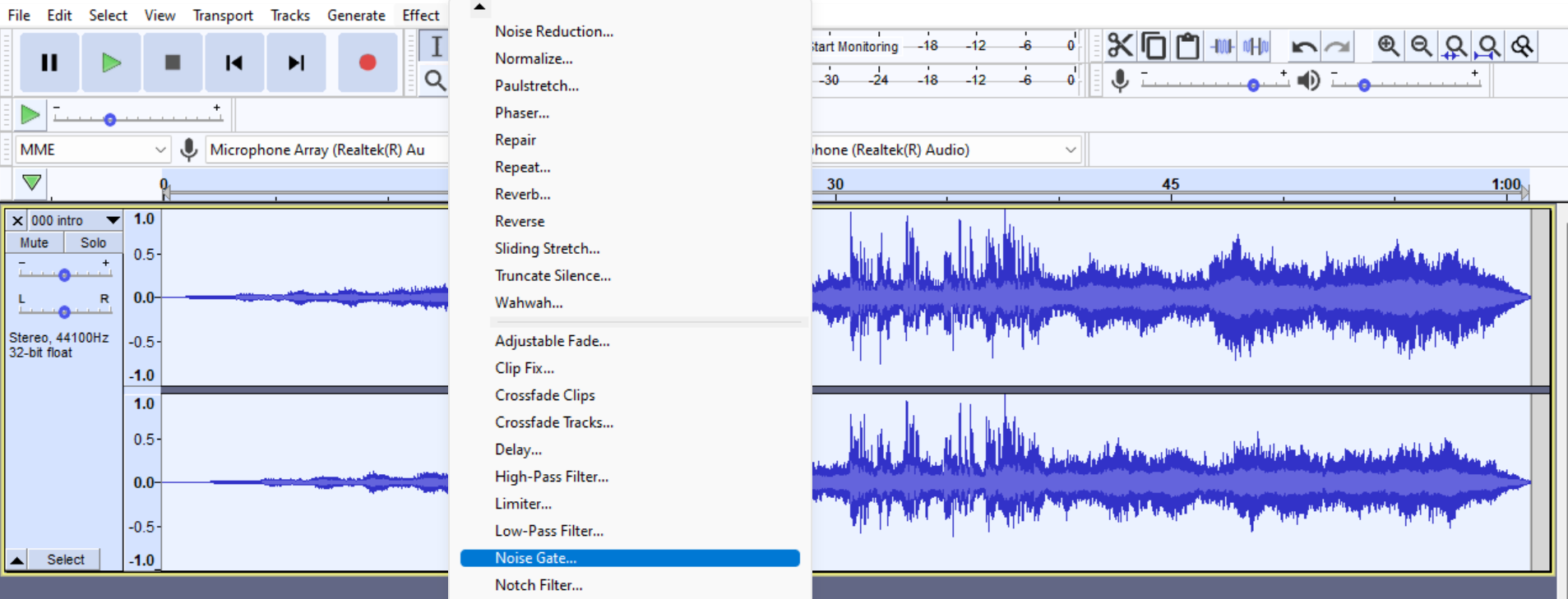
Make sure the Gate is on Select Function.
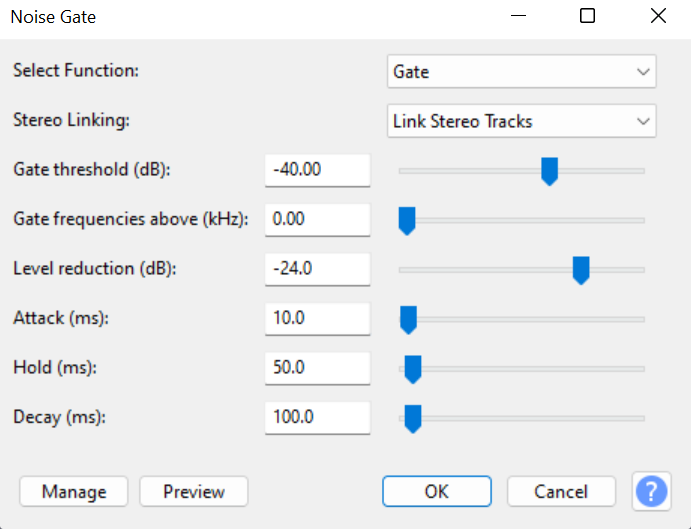
Use preview when adjusting the settings.
Click OK when you’re satisfied to apply the effect to the entire audio file.
There are a lot more settings here:
Gate threshold: The value determines when the audio will be affected (if below, it will reduce output level) and when it will be left untouched (if above, it will return to the original input level.)
Level reduction: This slider controls how much noise reduction will be applied when the gate is closed. The more negative the level, the less noise passes through the gate.
Attack: It sets how quickly the gate opens when the signal is above the Gate threshold level.
Hold: Sets how much time the gate remains open after the signal drops below the Gate threshold level.
Decay: Sets how quickly the gate will close once the signal drops below the Gate threshold level and hold time.
Removing Echo in Audacity with CrumplePop EchoRemover
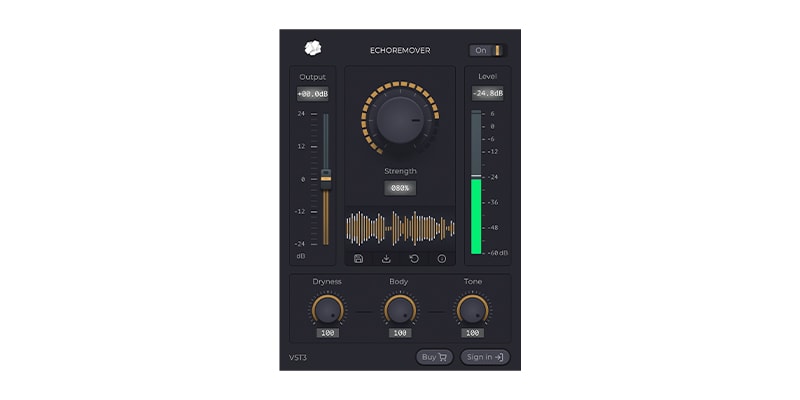
Removing echo with EchoRemover is as simple as just dragging and dropping the plug-in into the track.
- Download and install CrumplePop plug-ins. Ensure you’re not running Audacity when installing; otherwise, you will need to restart it.
- Open Audacity and import the audio file with an echo that needs to be removed.
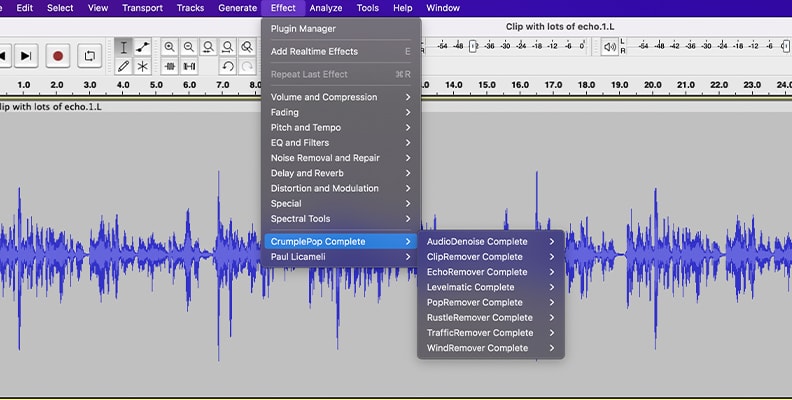
- Select the track and go to Effects. Scroll down to the second block until you see EchoRemover Complete. If you don’t see the plug-in, you’ll need to scan your plug-ins from Effects > Plugin Manager > Rescan.

- If you’re running a newer version of Audacity, you can add real-time effects from the Effects button on the Track Control Panel to the left. Click Effects > Add Effects > CrumplePop Complete > EchoRemover Complete.
Usually, you won’t need to adjust EchoRemover too much because it will automatically detect the echo from your track and remove it. However, if you prefer to adjust the effect to your liking, you can use the strength knob to set how much EchoRemover to apply to the audio track. Adjust the Dryness, Body, and Tone knobs and the Output slider if the audio gets too low to balance sound quality and echo.
What Can I Do if I Still Hear Background Noise in My Recording?
After editing your audio with either Noise Reduction or the Noise Gate function, you may need to add different settings to fine-tune your audio. It's hard to completely remove background noise from an already recorded audio, but there are some extra effects you can add to clean your track.
High Pass Filter and Low Pass Filter
Depending on your sound, you can use either a high pass filter or a low pass filter, which is ideal if you want to tackle only the instrumental part or for vocal reduction, for instance.
Use a High Pass Filter when you have quieter sounds or muffled sounds. The effect of the high pass filter will reduce the low frequencies, and so the high frequencies will be enhanced.
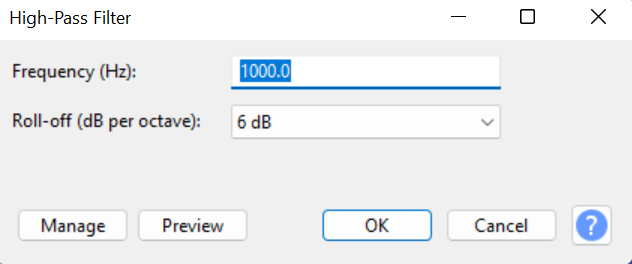
Use a Low Pass Filter when you want to target high-pitched audio. It will attenuate the high frequencies.
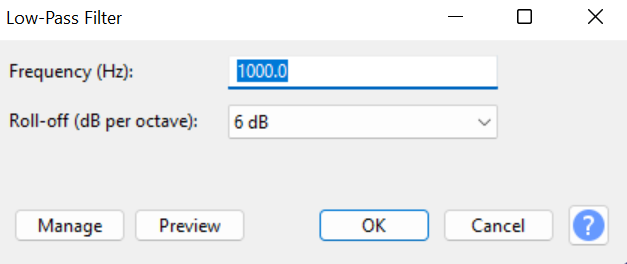
You can find these filters under your effect menu.
Equalization
You can use EQ to increase the volume of some sound waves and reduce others. It may help you remove echo from your voice, but it’ll work best after using Noise Reduction to sharpen your sound.
To apply EQ, go to your effects menu and look for Graphic EQ. You can also opt for Filter Curve EQ, but I find it easier to work with the Graphic EQ because of the sliders; in Filter Curve, you have to draw curves yourself.
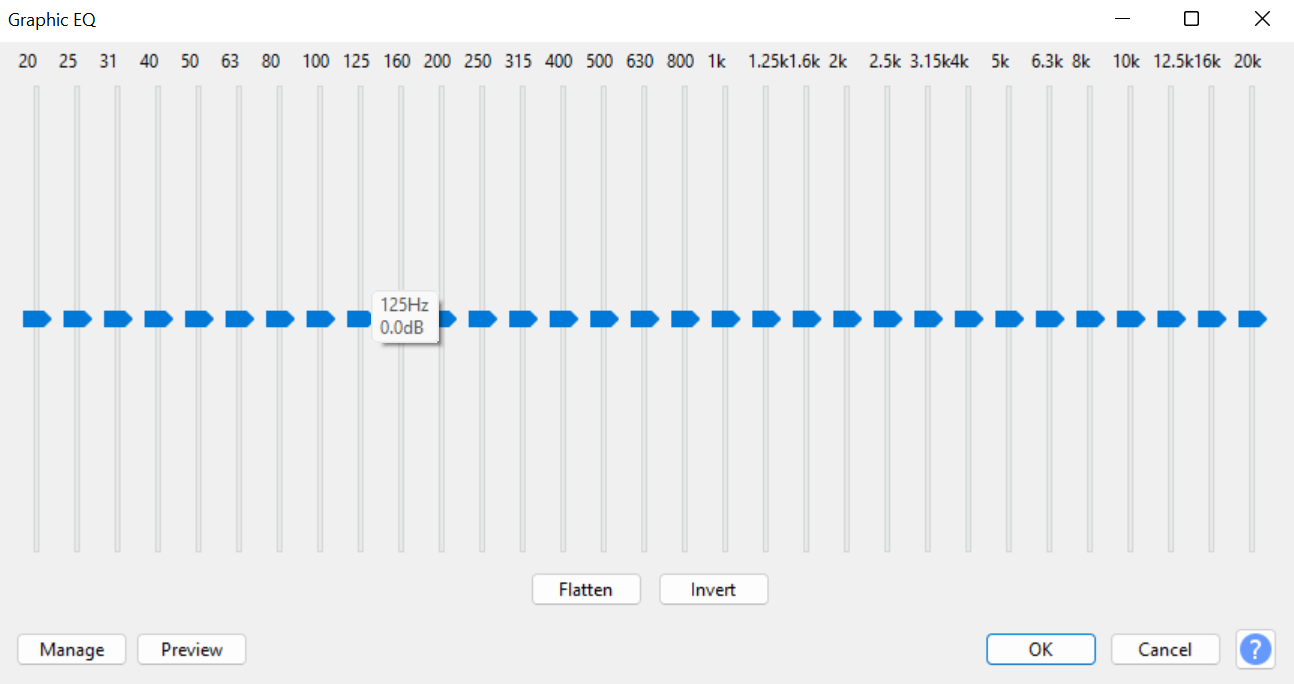

Compressor
A compressor will change the dynamic range to bring your audio volumes to the same level without clipping; similar to what we found in the Noise Gate settings, we have a threshold, attack, and release time. What we are going to look at here is the Noise Floor value to prevent background noise from being amplified again.
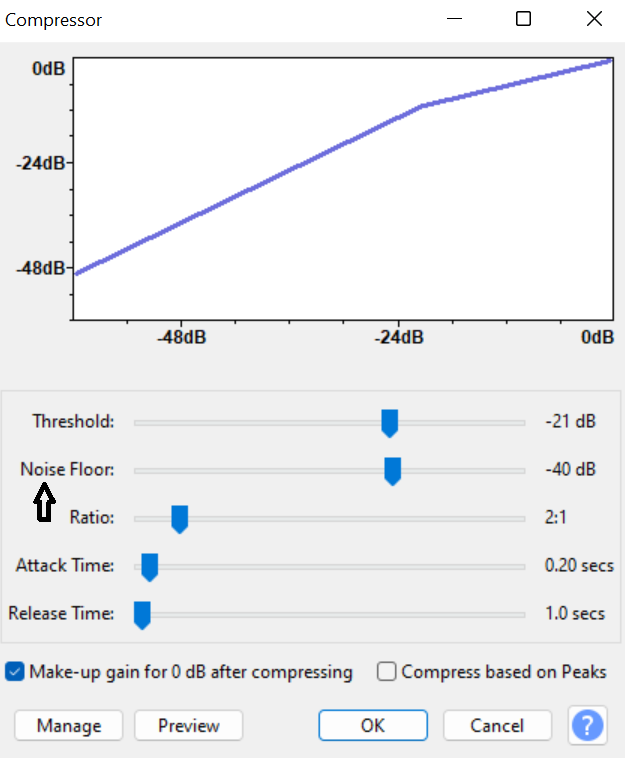
Normalization
As a final step, you can normalize your audio. This will increase the volume to its highest level without affecting the sound’s authenticity. Just don't go over 0dB, as this will cause permanent distortion on your audio. Staying between -3.5dB and -1dB is the safest option.
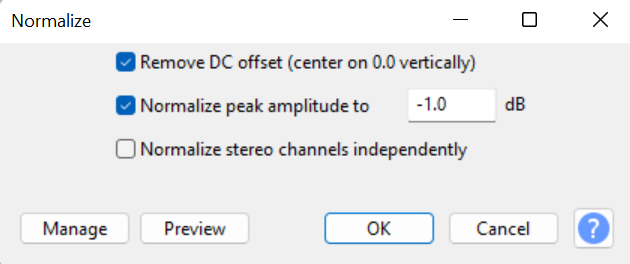
Exporting the Audio File
Whenever we are ready, export the edited audio file:
Under the File menu, click Save Project and then go to Export and choose your format.
Name your new audio file and click Save.
The Metadata window will automatically pop up, and you can fill it, or just click OK to close it.
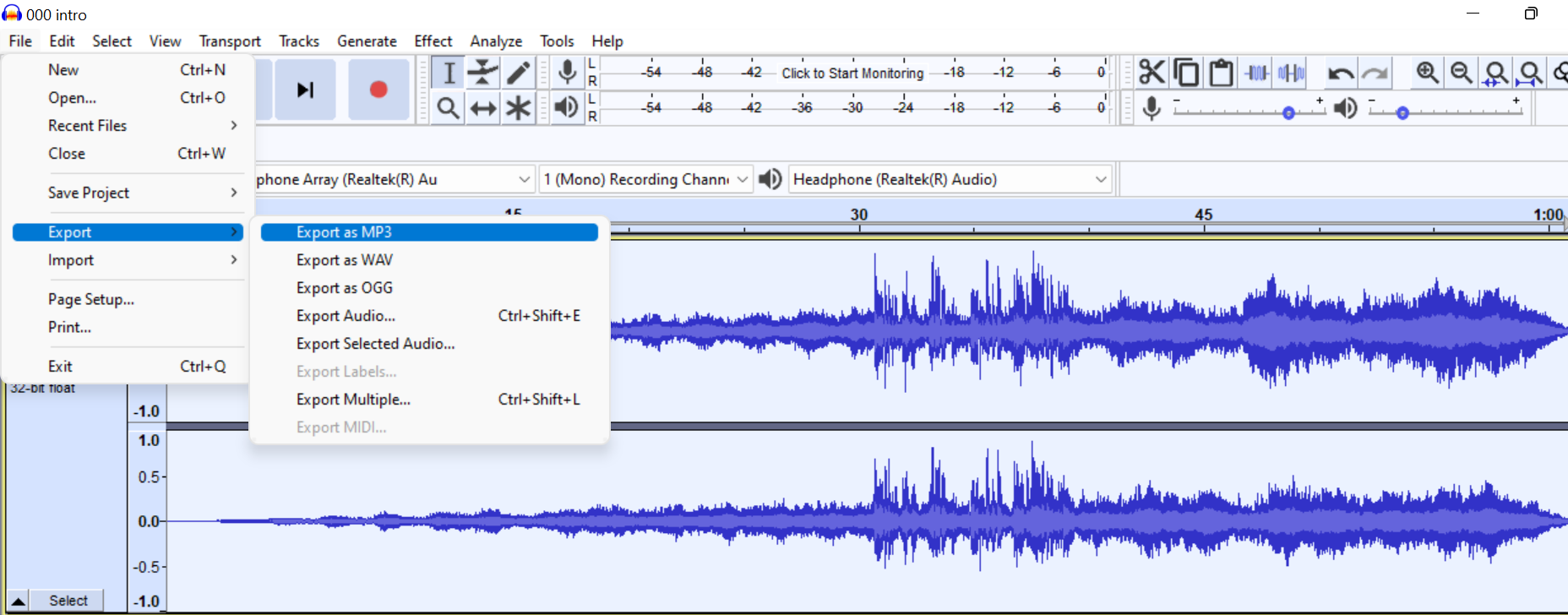
And you’re done!
If you still want to go further, Audacity allows VST plug-ins, so you can add external noise gate plug-ins to try. Remember, there are different ways to remove echo in Audacity, so try them all for yourself and find what works best for your specific project. I know it can be tiring, but it will help you enhance your audio considerably.
Reducing Echo in Your Recording Room Without Using a Plug-In
If you are constantly finding an excessive echo in your audio recordings, your recording settings probably require some adjustments. Before you run to your nearest electronic store to buy a new microphone or audio gear, you should pay attention to your environment and computer settings.
Larger rooms will create more echo sound and reverb; if your home studio is in a big room, having some sound-absorbing components will help to reduce sound propagation. Here's a list of things you can add when changing location is not an option:
Ceiling tiles
Acoustic foam panels
Bass traps
Sound-absorbing curtains
Cover doors and windows
Carpets
A soft couch
Bookshelves
Plants
If an echo still shows on your recording after treating the room, then it's time to try different recording settings and ensure every device works correctly.
Final Thoughts on Audio Quality
Reducing echo on your audio recordings with Audacity is not a difficult process, but bear in mind that removing it entirely with audio editing is a completely different matter. The best way to remove echo and reverb, professionally and once and for all, is to use a professional echo remover plug-in like EchoRemover (or try CrumplePop Voice Enhance which removes noise, echo and improves vocal clarity), which identifies and removes sound reflections while leaving all the other audio frequencies untouched.
EchoRemover from CrumplePop has been designed with podcasters and sound engineers in mind to provide them with an advanced plug-in that can automatically remove all unnecessary reverb while preserving the quality and authenticity of the original audio. The intuitive interface and sophisticated algorithm allow for removing unwanted noise in seconds, adding clarity and depth to your audio files.









